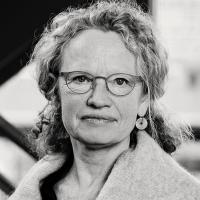Bog
Economic growth and private sector investments do not do the job alone
"Dairy investments - a drop that does not expand" by Ligia Gómez and Helle Munk Ravnborg
This conclusion is clearly illustrated in a study carried out by Helle Munk Ravnborg from DIIS and Ligia Gómez from Nitlapan (Nicaragua) and launched as part of the Rural Territorial Dynamics programme coordinated by Rimisp - Latin American Center for Rural Development and funded by Canadian IDRC.
One of the areas of Nicaragua that experienced economic growth between 1998 and 2005 is the milk producing zone of Chontales and Boaco on the eastern banks of Lago Cocibolca. Following the peace agreements in 1990 in Nicaragua, public investments in infrastructure and milk collection and cooling facilities made it possible to re-establish the livestock herds that had been decimated during the civil war of the 80'ies and to ensure year-round milk supplies. Later, following the peace agreements in neighbouring El Salvador, the milk collection and processing capacity was drastically expanded through El Salvadoran private investments, and dairy exports to El Salvador from the area have grown a lot since the late 90'ies.
However, it is primarily the local elite who has benefited from these developments in general and from public investments in infrastructure and productive facilities, supported through international development cooperation, in particular. Cows are expensive and to produce milk year round in the area, it is necessary to have access to pastures both in the drier parts for grazing during the rainy season and in the more humid parts for dry season grazing. Owners of smaller plots of land have gradually had to give up their land. Instead they have taken up the search for employment elsewhere - often in neighbouring Costa Rica - or for cheaper land, often in Nicaragua's forested interior. Only limited employment opportunities have been generated locally through the growth in livestock keeping and dairy production. Whereas the Nicaraguan population in general grew between 1995 and 2005, the population of the milk producing zone stagnated. Therefore, the reduction in poverty rates which the area witnessed between 1998 and 2005 seem to be result of an expulsion of the poor from the area rather than an inclusion of the poor in economic activities.
The report “Dairy investments - a drop that does not expand“ (in Spanish) analyses the territorial dynamics in Nicaragua’s milk producing zone since the early 1990s up until now and describes how public and private investments have helped to make it possible to the traditional elite not only to re-establish itself following the Sandinista revolution but also to jump to higher levels in the dairy value chain.
One of the areas of Nicaragua that experienced economic growth between 1998 and 2005 is the milk producing zone of Chontales and Boaco on the eastern banks of Lago Cocibolca. Following the peace agreements in 1990 in Nicaragua, public investments in infrastructure and milk collection and cooling facilities made it possible to re-establish the livestock herds that had been decimated during the civil war of the 80'ies and to ensure year-round milk supplies. Later, following the peace agreements in neighbouring El Salvador, the milk collection and processing capacity was drastically expanded through El Salvadoran private investments, and dairy exports to El Salvador from the area have grown a lot since the late 90'ies.
However, it is primarily the local elite who has benefited from these developments in general and from public investments in infrastructure and productive facilities, supported through international development cooperation, in particular. Cows are expensive and to produce milk year round in the area, it is necessary to have access to pastures both in the drier parts for grazing during the rainy season and in the more humid parts for dry season grazing. Owners of smaller plots of land have gradually had to give up their land. Instead they have taken up the search for employment elsewhere - often in neighbouring Costa Rica - or for cheaper land, often in Nicaragua's forested interior. Only limited employment opportunities have been generated locally through the growth in livestock keeping and dairy production. Whereas the Nicaraguan population in general grew between 1995 and 2005, the population of the milk producing zone stagnated. Therefore, the reduction in poverty rates which the area witnessed between 1998 and 2005 seem to be result of an expulsion of the poor from the area rather than an inclusion of the poor in economic activities.
The report “Dairy investments - a drop that does not expand“ (in Spanish) analyses the territorial dynamics in Nicaragua’s milk producing zone since the early 1990s up until now and describes how public and private investments have helped to make it possible to the traditional elite not only to re-establish itself following the Sandinista revolution but also to jump to higher levels in the dairy value chain.
Emner
Regioner
Nicaragua
DIIS Eksperter

Billede/illustration af Lynggaardhansenfoto.dk
Inversión lechera - una gota que no se expande
dinámicas territoriales en la zona lechera de Santo Tomás, Chontales, Nicaragua